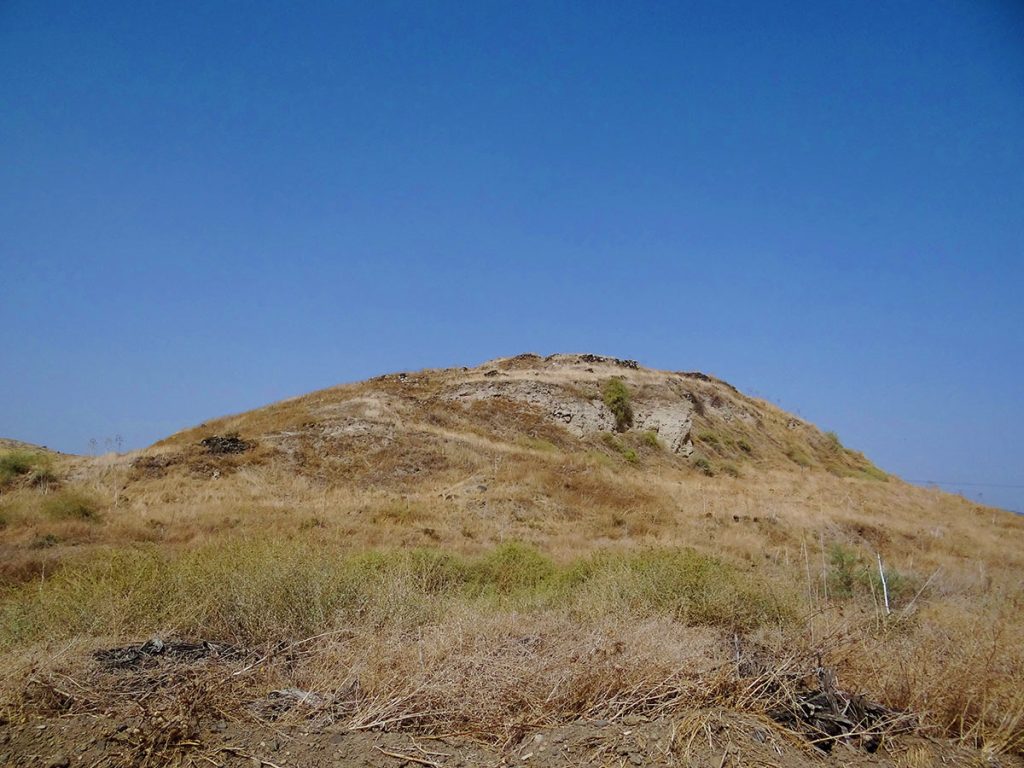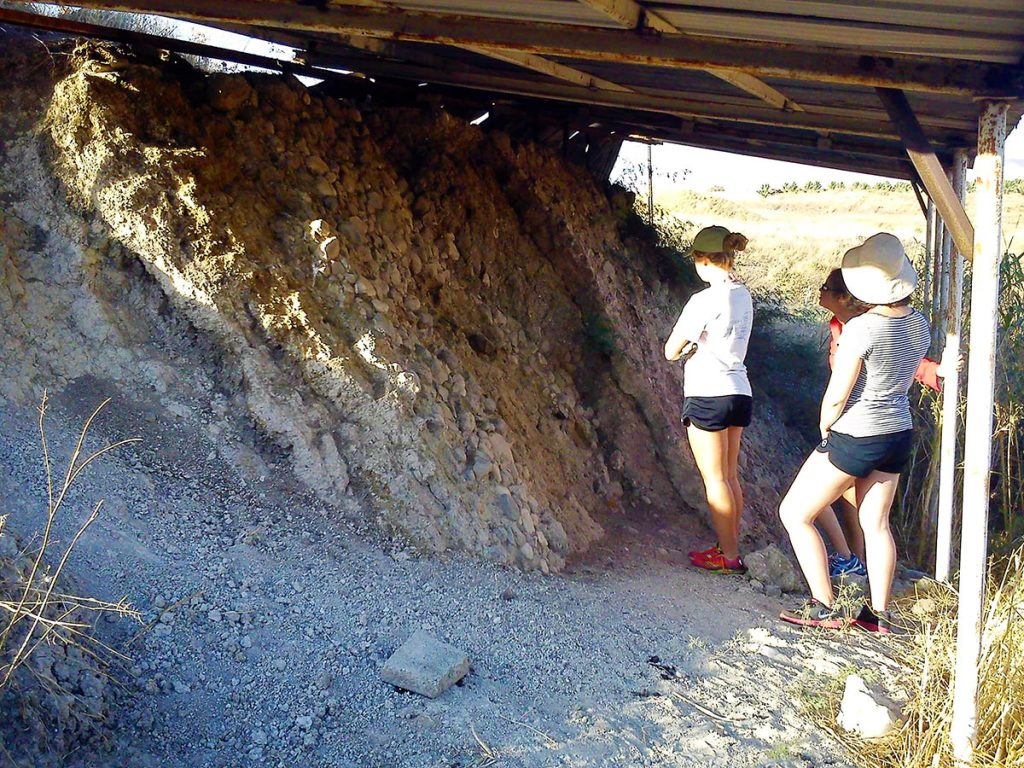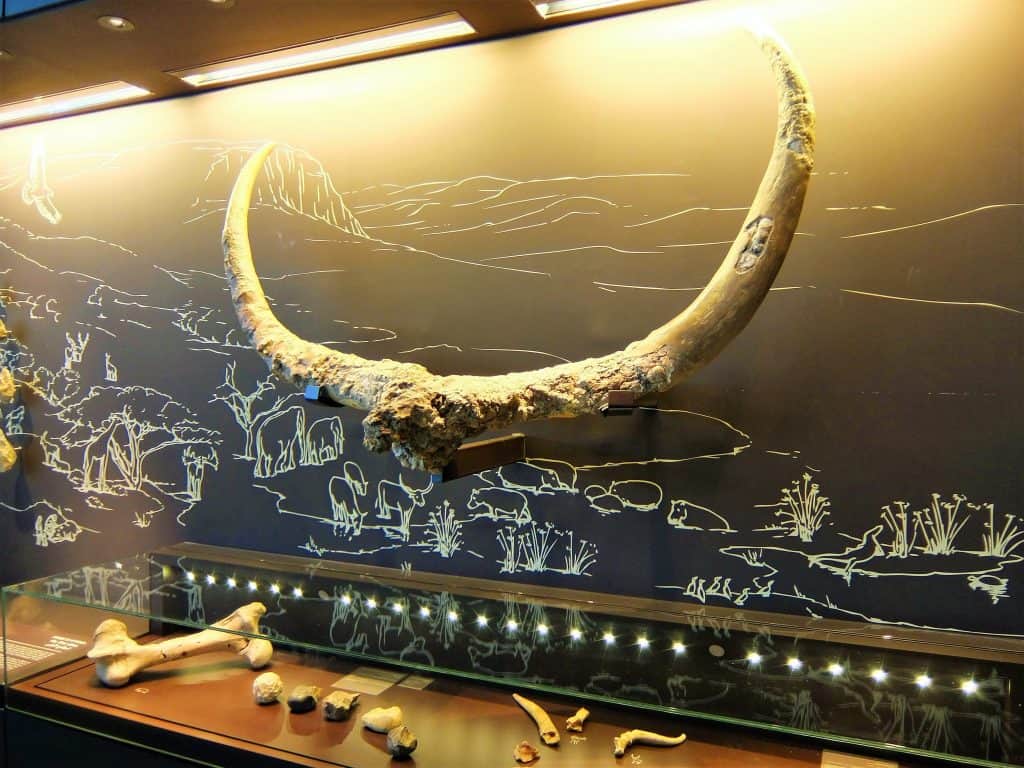The story of Tel Ubeidiya begins with East Africa as the birthplace of the human race. The earliest vessels in the world dating to 2.6 million years before our time were found in Ethiopia and they mark the beginning of the Paleolithic period (Early Stone Age). From Africa, the ancient human species spread to Asia and Europe. Israel was then, most likely, a major junction as it was on the way on one of the convenient routes along the Syrian-African rift that did not require crossing a sea and at its edge were freshwater lakes like the Sea of Galilee and a natural environment of flora and fauna similar to that of East Africa.

Credit: Hanay, CC BY-SA 3.0, via Wikimedia Commons
The Discovery at Tel Ubeidiya
At Tel Ubeidiya in the Jordan Valley in the late 1950s, one of the nearby Kibbutz members found fossilized bones while cultivating the fields. Due to the tectonic activity along the Syrian-African Rift, the archeological strata were pushed upwards, and after the discovery archeological excavations began in which tens of thousands of vessels were found.
The site dates to a period of about 1.4 million years ago and is one of the earliest prehistoric sites in the world found outside of Africa. The tools found in it are similar to tools from sites from that period in Africa and teach about the abstract thinking of humans in that period, and their ability to plan early. The tools were carved from flint, basalt, and limestone in a variety of shapes and sizes. But some stones were used for certain tools according to their properties, while other stones with different properties were used to make tools of a different kind.

The ancient lake attracted many animals, and among the fossil bones found were mammoths, rhinos, monkeys, and panthers. An ancient animal was also found at the site, which looks like a hybrid of a sheep and a giant bull with its horns dropped about eight meters. Some bones were also found to have cut marks, indicating that the man used stone tools to remove the meat from the bones. Some of the finds found at Ubeidiya are displayed at the Israel Museum. The site has been recognized as a national park but is neglected and prone to weathering.

The site itself is not impressive at all so visiting the site on its own is not much. But there are three museums nice museums in the area that displays local prehistory. The first is the Museum of Yarmukian Culture at Shaar HaGolan. Another is the Gordan House Museum at Kibbutz Degania (Aleph). Last, there is a nice little museum named The Upper Galilee Museum of Prehistory also known as the Prehistoric Man Museum at Maayan Baruch.
So this is what needs to be done – create a sequence from the museums to the area. Then to go and visit the site.

